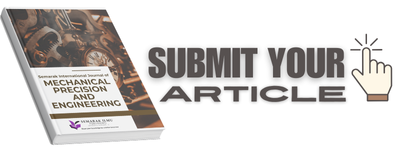Optimizing Nozzle Expansion Ratios with Energetic Additives for Enhanced Hybrid Rocket Motor Efficiency
DOI:
https://doi.org/10.37934/sijmpe.1.1.2032Keywords:
Hybrid Rocket Motors, Erosion rate, Regression rate, Hybrid rocket fuelAbstract
Hybrid rocket motors (HRMs) combine the advantages of liquid and solid rocket propulsion systems, offering operational simplicity, safety, and cost-effectiveness. However, a significant challenge in HRMs is the low regression rate of solid fuel, which limits their thrust and overall performance. Various methods, such as fuel grain geometry modification, the use of swirling oxidizers, and the incorporation of energetic additives, have been explored to address this. Energetic additives, including aluminum (Al), magnesium (Mg), and high-entropy alloys (HEAs), are particularly effective in enhancing regression rates while influencing other motor characteristics such as thrust and nozzle erosion. This study investigates the effects of different energetic additives and varying nozzle expansion ratios (ε = 10, 15, 20) on thrust, regression rate, Mach number, and nozzle throat erosion. Results reveal that incorporating HEA at 10% significantly enhances performance, achieving a thrust of 91.61 N at ε = 20, compared to the baseline value of 71.53 N at ε = 10. The Mach number also increases notably, with HEA 10% yielding 3.631 at ε = 20, compared to the baseline value of 3.017 at ε = 10. Similarly, the regression rate improves from 1.15 mm/s (baseline at ε = 10) to 1.42 mm/s with HEA 10% at ε = 20. Regarding erosion characteristics, throat area increase is minimized for HEA additives, with a maximum percentage increase of 10% at ε = 20 for HEA 10%. The findings highlight that energetic additive, especially HEAs, effectively mitigate nozzle erosion while significantly improving thrust and regression rates. This research underscores the importance of optimizing additive composition and nozzle expansion ratios to enhance HRM performance and durability, paving the way for more efficient hybrid propulsion systems.
Downloads









